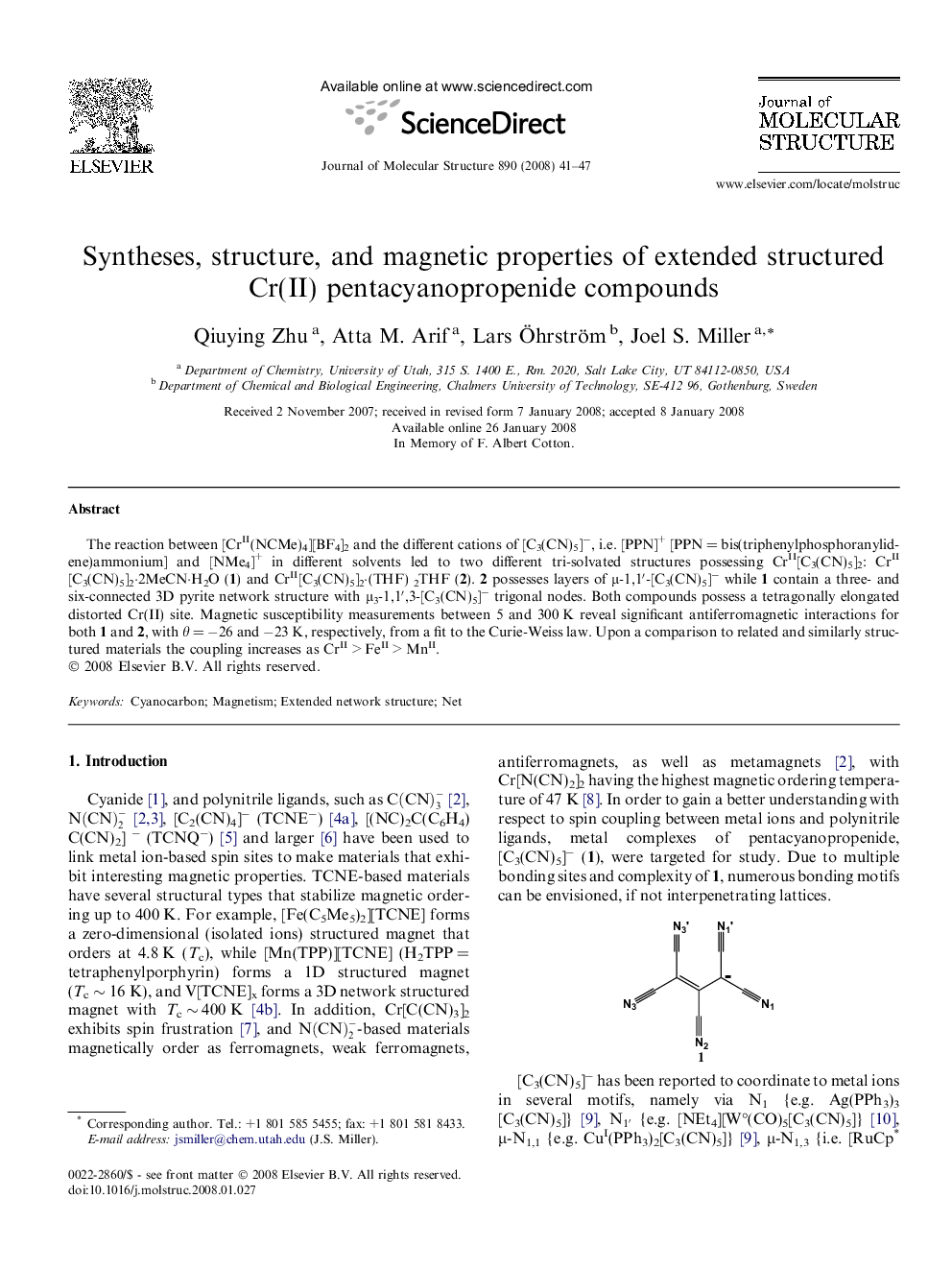| Article ID | Journal | Published Year | Pages | File Type |
|---|---|---|---|---|
| 1407166 | Journal of Molecular Structure | 2008 | 7 Pages |
The reaction between [CrII(NCMe)4][BF4]2 and the different cations of [C3(CN)5]−, i.e. [PPN]+ [PPN = bis(triphenylphosphoranylidene)ammonium] and [NMe4]+ in different solvents led to two different tri-solvated structures possessing CrII[C3(CN)5]2: CrII [C3(CN)5]2·2MeCN·H2O (1) and CrII[C3(CN)5]2·(THF) 2THF (2). 2 possesses layers of μ-1,1′-[C3(CN)5]− while 1 contain a three- and six-connected 3D pyrite network structure with μ3-1,1′,3-[C3(CN)5]− trigonal nodes. Both compounds possess a tetragonally elongated distorted Cr(II) site. Magnetic susceptibility measurements between 5 and 300 K reveal significant antiferromagnetic interactions for both 1 and 2, with θ = −26 and −23 K, respectively, from a fit to the Curie-Weiss law. Upon a comparison to related and similarly structured materials the coupling increases as CrII > FeII > MnII.
